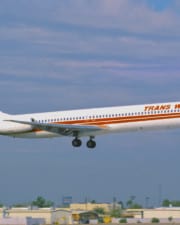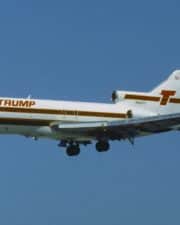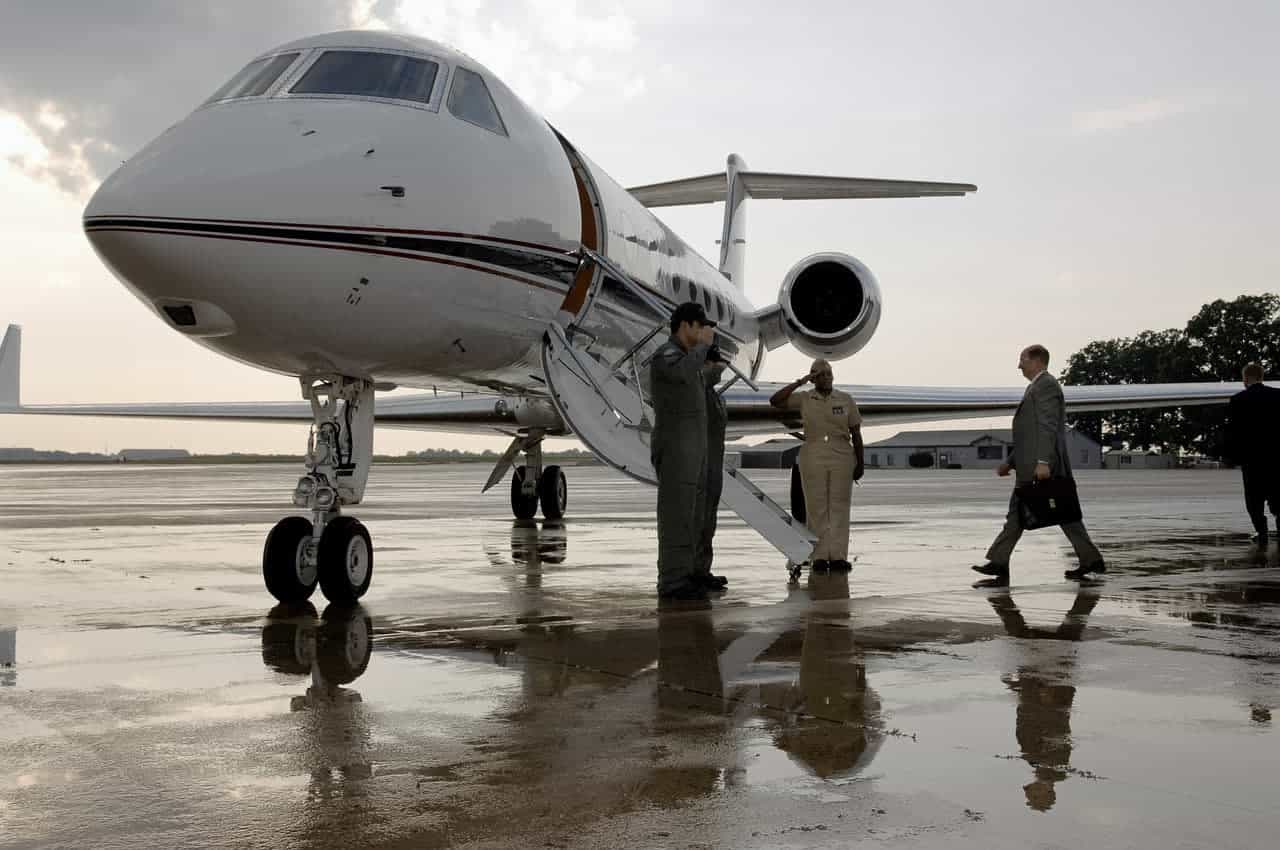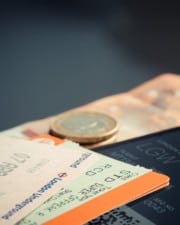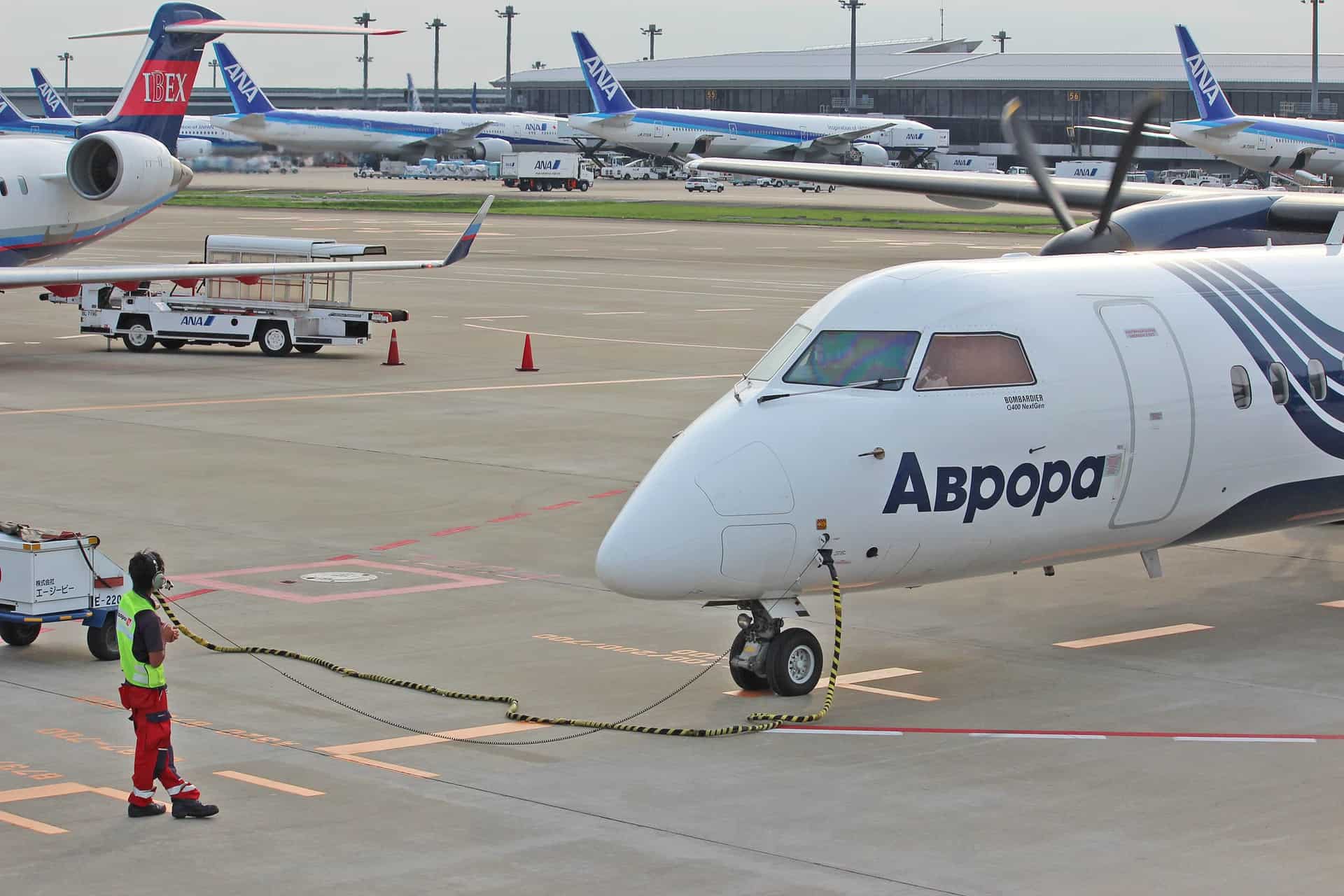Low-cost budget airlines can be tricky to maintain. You somehow need to maintain a balance between profitability and profit. From 1981 to 1987, People Express tried to walk that tightrope before teetering into bankruptcy.
Of course, it’s what happened in between either end of that high wire economic balancing act that makes their story live on.
Part of what makes People Express’s story so compelling is it’s both stereotypical of that of low-cost airlines in some ways and radically deviates from it in others.
The struggle to maintain low costs while making money? That’s usual. Acquiring other low-cost airlines and acting like a big-timer yourself? That’s not usual at all – and it’s part of what makes People Express’s story stand out and live on.
So, who were these upstarts based out of Newark, and why couldn’t they make their brand of low-cost airline travel outlast the 80s?
Table of Contents
1978: The Airline Deregulation Act Sets the Stage
Business, like life, is often a matter of perspective. When the Airline Deregulation Act of 1978 took effect, it meant trouble for many older airlines such as Pan Am and TWA, but opportunity for newer ones.

That’s because this act did just what it says on the tin – deregulated airline ticket prices. For older companies struggling to stay afloat, this meant trouble from newer upstarts who could suddenly charge less and carve out a niche for themselves.
In other airline stories (again, see Pan Am and TWA) the Airline Deregulation Act was the beginning of the end. For People Express, however, it was the beginning. They were exactly the kind of little upstart budget niche airline the act could help gain ground.
1981: The Beginning
In a way, People Express was a product of and made largely possible by its time. Not only did the Airline Deregulation Act help in a big way, but by 1980, America was starting to recover from something that had plagued it through much of the 70s – oil shortages, devastating airlines.
From American support of Israel in the Yom Kippur War in 1973 to siding with the Shah and against the Ayatollah in the Iranian Revolution in 1979, America was at odds with Arab states a lot in the 1970s. (The more things change…) This meant huge oil shortages.
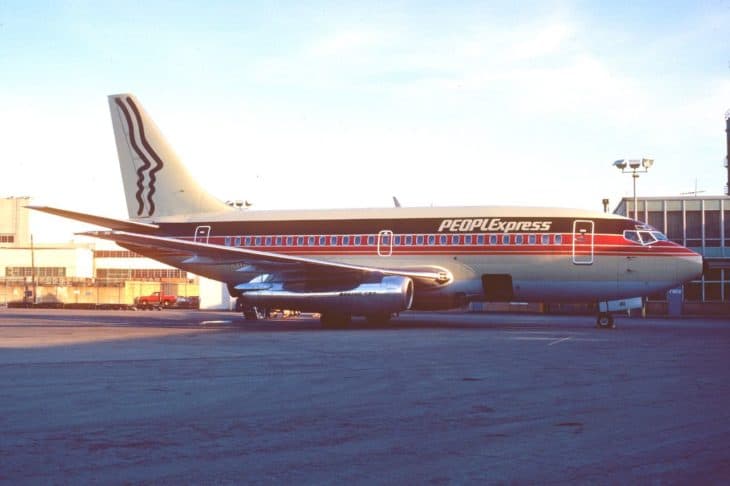
But while things weren’t perfect by 1980, they were much better than during the bleakest days of oil rationing in the 1970s. The same could be said of the economy – not at all perfect, but better than its bleakest point. The market and conditions were ripe for a new airline.
Donald Burr founded People Express back in 1980, with operation officially beginning in 1981. Initially, the company offered a very limited service, which you would expect from a small, budget, niche airline. They handled flights between Newark, Norfolk, Columbus, Cleveland, Buffalo, Jacksonville, and similar cities.
You might notice something about all of those cities – they aren’t the big hubs you typically associate with air travel, or cosmopolitan life for that matter. That was likely intentional. Smaller cities and airports can charge less upfront, which makes it less expensive for startup companies.
In theory, this was a win-win for both People Express and the smaller companies it serviced. People Express got the business it needed to get started, and these cities got more affordable air travel.
There was also a nice bit of symbolism in this symbiosis. Think of big cities and airports – New York with JFK and La Guardia, Los Angeles with LAX, Paris with Charles de Gaulle, London with Heathrow, Tel Aviv with Ben Gurion Airport, and so on.
Those big-time cities and airports hosted big-time airlines – and cost big-time money.
Buffalo, though? Cleveland? Newark? Those were lower-cost, working-class cities, and proud of it.
What’s more, People Express did something novel for the time – they offered all of their seats for the same price. Anyone who’s ever had to fly coach or pay extra for perks in first-class knows what a big deal that can be. Now imagine that happening back in 1981.
Every seat on People Express was an “economy seat.” Everyone was “part of the People,” if you will.
On the one hand, that may come across as bare bones skimping and saving – and that’s exactly what it was. This was a budget airline, after all. But on the other hand, remember that People Express serviced largely smaller, working-class cities.
The airline earned some derisive nicknames from those claiming their “everyone’s equal” approach was really just being inexpensive, including “Air Bulgaria” (remember, the Cold War was still going on).
On the other hand, if you’re a working-class, no-frills kind of person, would you trade costly luxuries you don’t care about for a less expensive ticket where everyone is equal and proud of it? Especially when flying to places not like Paris but, well, Cleveland? Many people would – and did.
People Express’s pricing was both a much-needed money saver and a great way to tie into its budget working-class image.
So, People Express really could position itself as a budget airline for, well, “the people.” They offered low-cost, no-frills flying for the cities and communities that embraced that ethos.
It was a sensible business model, allowing People Express to take off and, as we’ll see, expand beyond those humble roots.
1983: “London Calling” and Expansion Begins
Most little businesses are content to just stay in their niche, and that’s what People Express largely did. They knew they could not compete with the bigger, fancier airlines which were taking people to bigger, fancier locations, and so stuck to their small airport, smaller city, working-class roots.
But it was the 80s – not a decade known for smallness, or humility for that matter.
It was 1983. Bonnie Tyler was busy having a “Total Eclipse of the Heart,” blockbusters such as Scarface and Return of the Jedi were breaking the box office, we were Flashdance-ing and sitting through three hour biopics about Gandhi – people were not in the mood for “staying small.”
Neither was People Express, which is why in that year they made a huge change to their business model and took it overseas. Yes! People Express, the tiny airline that promised low fares and budgeted everything at tiny working-class cities, could now fly you to London!
Granted, they were still flying to London Gatwick (and if you’ve ever been you know that still feels like London’s “budget airport,” with the sometimes-shoddy service to prove it), but the point was clear. People Express wasn’t playing around, and they weren’t content “staying small.”
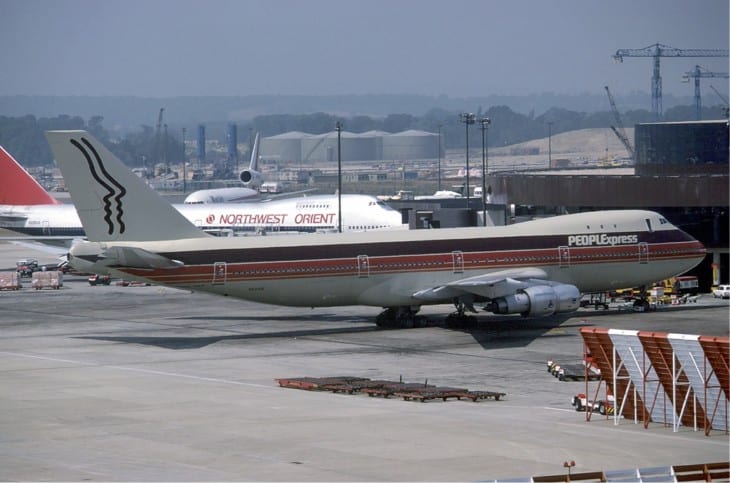
Still, transatlantic service was a huge deal for People Express.
On the one hand, as mentioned, it inched them a bit further away from those smaller more working-class roots (and “routes”) that had made them a success to this point.
On the other hand, budget fare and smaller airports or no, transatlantic flights were a big deal, and they’d cost bigger bucks, no?
Well, no, at least not compared to their competitors.
People Express was still charging just $149 per one-way flight, which is just less than $400 in 2020 adjusted for inflation. That’s not inexpensive, but it’s still less expensive than some airlines would offer for similar trips today, again, even adjusting for inflation.
Of course, there are problems with flying one-way internationally. (If you’ve tried it, you may know British Border Force agents in particular don’t like it – save the time and grief and buy a two-way ticket, folks!) Either way, if you plan on coming home, you need another ticket anyway.
That said, this was far less expensive than you could fly to London (and, from there, Europe) than many other options at the time. In its own way, People Express had found a way to “go big” while “staying small.”
And, at first, it worked.
What’s more, this wasn’t the only expansion of their routes they were making. People Express also added a route to Houston the same year, marking its first major expansion out of the Atlantic market.
It’s worth noting that for other flights, People Express used a Boeing 737, while for the London ones, they used a 747.
What’s more notable, however, is this marked the first break in their everyone’s-equal pricing. The London flights aboard the 747 had economy and “premium” seating and pricing. That said, flights to London were (and are) longer and more expensive, so in fairness, this made economic sense.
That said, People Express was also starting to see other price points creep into its balance sheet. Have you ever been annoyed at having to pay extra for checked bags? Thank People Express – they inaugurated the process among US airlines. They also charged extra for in-flight sodas and snacks.
Still, when you’re a budget airline, you have to make up the money somewhere, and by 1983 People Express was flying high.
By 1985, however, they’d start to fly too close to the sun.
1985: Acquisitions and Problems Begin
One of the ways companies grow is by acquiring other ones. This is usually big companies acquiring little companies – but, remember, by 1985, People Express felt like they were a big company.
So, People Express decided to buy Frontier Airlines, a Denver-based airline. They advertised this new expansion with slogans like “We’re Flying The Widest Plane to the Highest Place: Introducing the Only 747 Service From New York to Denver.”
The acquisitions and expansions would only continue. They also bought two smaller airlines, Britt Airways Provincetown-Boston Airlines, to service routes to the New England area and Florida.
To top it all off, People Express was expanding its transatlantic flights, too, adding 747 service from New York to Brussels for an eye-poppingly low introductory rate of just $99. Even adjusted for inflation today, that’s a very low price for a transatlantic ticket.
Of course, if that sounds too good to be true, that’s largely because it was. For one thing, the service was no frills as usual, and the price would be bumped up to their London fare of $149 shortly. Premium class tickets were much higher, at $450.
For another, People Express was already experiencing economic pain. On August 2, 1985, the Associated Press detailed how bad that pain was. An article on their New York-Brussels routes revealed that within the first half of 1985, People Express “lost $5.8 million on operating income of $18.7 million.”
Those figures tell us three things. First, that for an airline acting so big by now, People Airlines was still quite small compared to its hundred million dollar competitors. Second, as much as it tried to expand and play with the big boys, doing so came at great, unsustainable costs.
Finally, People Express was near its end.
1986 to 1987: The End
People Express tried to adapt to its debt-laden situation. Marketing shifted from everyday people to business travelers who might pay the higher fares (though if you could do that, why not fly with one of the more established, luxurious airlines?). Cabins were redesigned with different groups.
The classless airline of “The People” now had first-class seats, and the inexpensive everyone-pays-the-same price scheme was abandoned.
It was a betrayal of its branding and customer base, brought on in large part by expanding too fast too quickly and pretending they were something greater than they were.
If you have ever wondered why People Express airlines failed, this is the biggest reason why, an Icarus-esque tale of flying too close to the sun and, in the era of big hair-sprayed hairdos and “Big in Japan,” that there is something bigger than what they were.
By mid-1986, People Express openly announced that it was seeking buyers. They were also forced to cease Frontier Airlines operations under their name around this time.
People Express found such a buyer in Texas Air Corp. Interestingly enough, Donald Burr had left Texas Air in 1980 to start People Express in the first place. Now, the owner from whom he’d split off, Frank Lorenzo, would be the one to scoop up the remnants of People Express.
The airline was sold off for $125 million, while a separate $176 million transaction purchased the assets of Frontier Express.
People Express would formally cease to exist on February 1, 1987, when its operations and assets were merged into Continental Airlines.
References ▾
Related Posts



